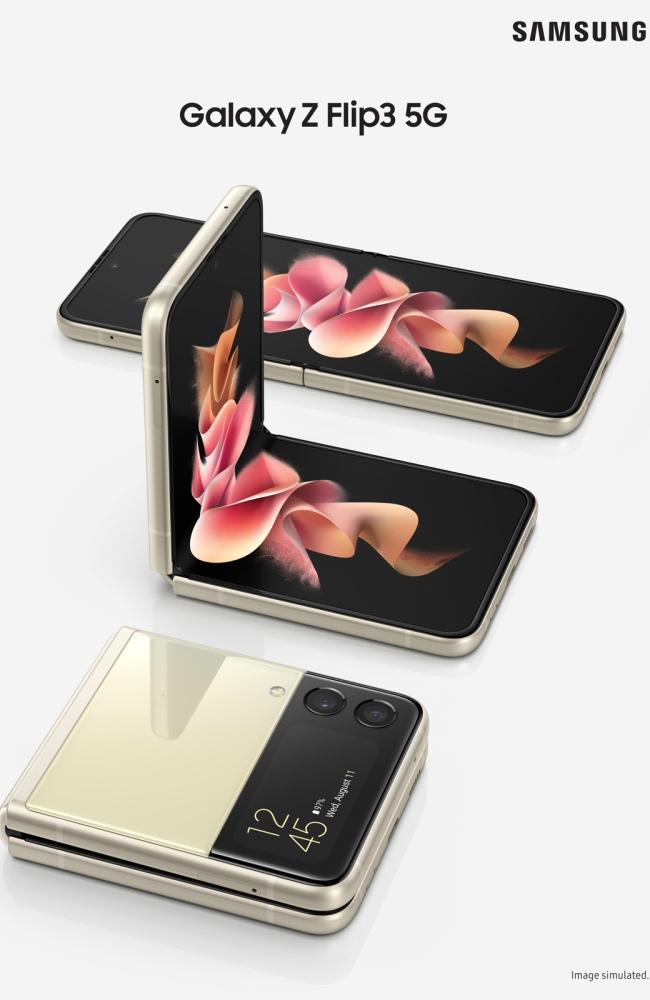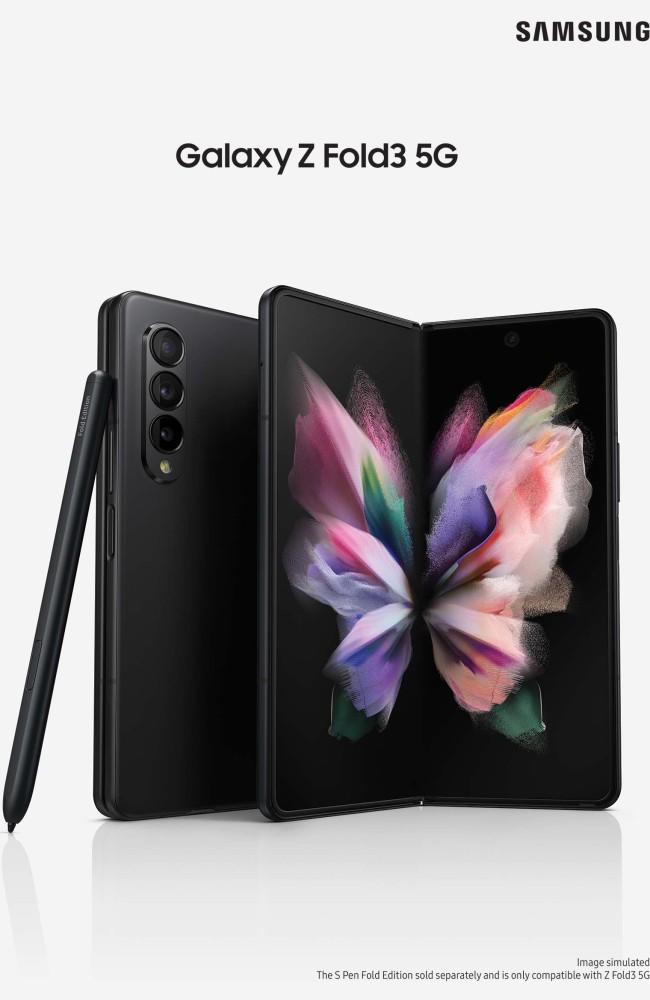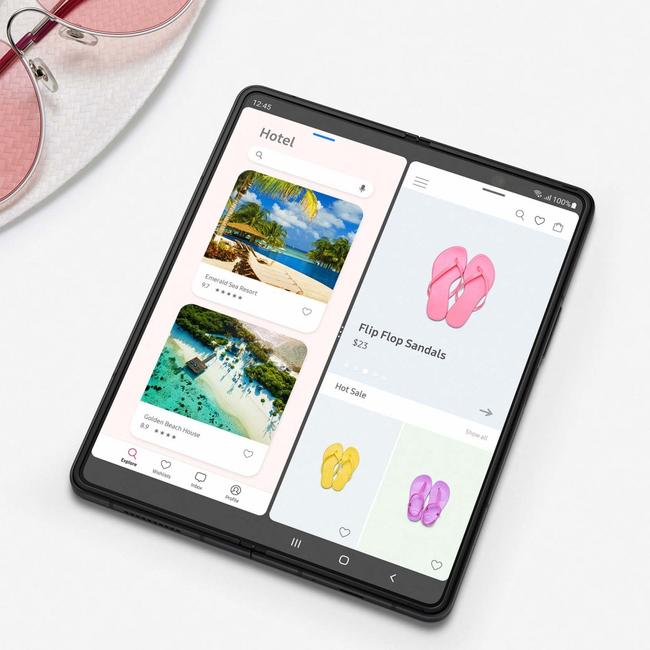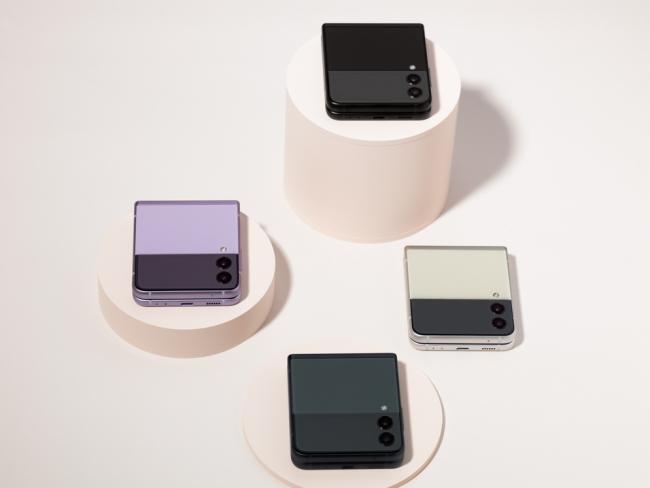These phones don't jiggle jiggle, they fold
Long gone are the funky little Motorola RAZR phones. Bring on mobiles that flip...and fold.

Long gone are the funky little Motorola RAZR phones. Bring on mobiles that flip...and fold.
Even the techiest minds will find the answer to most durability problems is...tape?
One of the best things about following technology is seeing how it evolves and the solutions people find for the problems that innovation creates.
For the last three years, Samsung’s folding phones have been pushing the boundaries of what phones can do. Smartphones had just been variations on the candy-bar black mirror theme for more than a decade, and while we technically didn’t need folding phones, it is nice to finally see something new in that space.

They harken back to the time of those funky little Motorola RAZR phones I was so jealous of, while playing Snake on my Nokia 8210. Back in those days, the screens were tiny, but at least you could hang up on people by snapping it shut, which was extremely satisfying. The modern folding phones fold the whole touch screen using technology one can only assume was invented using witchcraft, but you don’t get that same snapping satisfaction hanging up on the fifth telemarketer to offer you solar panels that week.

Last year the folding phone finally went mainstream. In the past, the Samsung Z Fold range had been reserved purely for rich nerds and fancy business people, because they were a bit impractical and expensive. But 2021 saw the launch of the first water and dust resistant Z Fold3 along with the Z Flip3. Influencers and musicians love the Flip range, with Todrick Hall and BTS promoting them, and Olivia Rodrigo featuring it in her Good 4 U video. Samsung even released special (if vaguely hideous) jeans with a pocket specially designed for the Z Flip3.

But with great popularity and mainstream appeal comes a great need for durability. Early Samsung folding phones had a big problem with this. The original release had to be delayed because tech journalists kept peeling off the plastic coating of the inner screen, destroying it almost instantly. Even without removing the protective coating, the older phones didn’t age well; the inner screen would become scratched, the soft aluminium of the shell became dented, and, thanks to the hinge and need to fold, they couldn’t be sealed enough to be water or dust-proof. The hinge itself is an engineering marvel, not to mention the witchcraft of having a screen that folds, but practical phone use still demands more durability.

During an interview with the lead engineers on the folding phone team at Samsung, I discovered that lot of those problems were fixed for the Fold3 and Flip3 in ways you might not expect.
The first thing the team needed to do was invent a new aluminium alloy to make the shell stronger. Dr Jinhwan Jeong is an engineer and material scientist responsible for making sure that the materials that go into phones are strong, but also pretty. He likened the quest for the right material to wanting to make a car out of the same armour as a tank. To achieve this, the team invented Armour Aluminium.
Most phones are made out of aluminium because it's a triple threat. “The special characteristic of aluminium alloy is that, if you compare it to another metal element like stainless steel, aluminium alloy is lighter and stronger. At the same time, it allows you to do surface processing with different colours.”
Aluminium by itself is quite a soft metal, as you’ve no doubt noticed from foil and cans. That’s why they add other elements to make alloys, like this Armour Aluminium, just like how you add a rebar skeleton to concrete to make it stronger. However, if you add too many elements to make it stronger, it makes it harder to smooth it and colour the metal. Dr Jeong likens it to making soup.
“When you make soups, if you want to make it spicy, you can add red peppers. But that means the colour will change and it’ll no longer be a clear soup.”
He then demonstrated the strength of the Armour Aluminium by bashing a brick of the old aluminium against the new Armour Aluminium. The older metal dented to hell and the new one barely sustained a scratch.

The second priority was a bit harder, because waterproofing something that’s full of holes is no easy feat. Minsu Jung, however, is no stranger to solving weird design problems. He’s the engineer at the Advanced Mechanical R&D Group at Samsung Electronics’ MX Business. He specialises in new concept smartphones and was a key designer on Samsung’s first metal antenna smartphone (Galaxy Alpha) and the Galaxy S8, which was the first full-screen smartphone.
Making a normal candy bar-shaped phone waterproof is a bit challenging because the seal between the screen and the body of the phone has to be perfect (tight enough to seal, but not so tight it cracks the screen), and there’s the charging port and speaker holes to seal.
Sealing a folding phone is a completely different challenge, because as well as those parts, there has to be gaps around the hinge and the folding screen, or none of the mechanisms can work.
These aren’t problems the original flip phones had, of course. They would survive the heat death of the universe, as long as you didn’t try to bend the hinge back too far and snap it.

To solve the modern problem, the engineering team started gathering at 2pm every day, and each member of the group was supposed to bring one good idea for a solution.
“But not everyone had a good idea every day, so sometimes we’d just end up staring at each other,” Jung said.
Early on the team had to accept that if they couldn’t seal the gaps, they would have to find a way to make the exposed components themselves waterproof.
There is an old joke about engineers: they see the answer to everything is either duct tape or WD40. So, it should come as no surprise that the solution was just using a bunch of (quite specific) waterproof tape.
That came with its own contradictions, though. “To make the tape more water resistant, the stickier the better. But the overall flexible display is a very sensitive material and… if we drop the phone, the device is exposed to a huge impact and the metal frames could be deformed. If we have very sticky water resistant tape that’s too sticky, it could actually cause more damage, so we needed to find the right balance to address that contradiction.”
Balance, contradictions and tape is really the theme for all the solutions, because if we go back to that tank armour analogy for the aluminium, there is a reason why cars aren’t made out of solid metal anymore. When older, more solid cars crashed, the body of the vehicle didn’t take the impact, so your squishy, more fragile body had to instead. In a phone, instead of a human body, it’s a delicate processor, but the same idea. So, the water resistant tape had to take on a second duty: shock absorber, which is another reason why it couldn’t be too sticky.

The next issue was dust proofing. Because, even though you should absolutely never take these phones to the beach (sand is your enemy), your pockets are also filled with mystery sand. Where does the pocket sand come from? No one really wants to know. But it’s there none the less.
The obvious answer to the hinge problem is to just put tiny brushes that sweep it out when you open or close it. But, of course, even for that they had to try a bunch of different materials to find one that was soft enough yet still maintained its shape.
After all that, did it work? And what does it mean for the future of folding phones?
Anecdotally, while the Fold3 isn’t my main phone, I have dropped it an alarming number of times because it’s so smooth it just leaps off my couch and onto my hardwood floor. Yet, there isn’t a scratch on it. Meanwhile, I know someone who smashed their Fold2 in a small drop within two weeks.
Folding phones aren’t quite at the level where they’re right for very clumsy people yet, despite how cool and useful they are. But it’s great hearing from the engineers that they’re aware of all the weaknesses and are willing to try a bunch of weird stuff to find the solutions.
The future of phones is absolutely folding and rolling, just because we’re always going to want more screen despite the limitations placed on us by pockets and bags, and apparently we’re going to get there by just using a bunch of fancy tapes.


